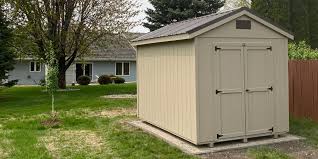Introduction
In the realm of construction projects, efficiency and accuracy are paramount. Effective framing materials and precise cost estimation are two cornerstones that can simplify the complexities of construction processes. This article delves into the significance of choosing the right framing materials and employing accurate cost estimation methods to streamline construction projects, enhance productivity, and ensure cost-effectiveness.
I. Importance of Framing Materials in Construction
A. Structural Integrity and Safety
Framing materials form the skeleton of any building, providing structural integrity and ensuring safety. Proper materials selection is crucial to withstand environmental factors, loads, and stresses, ensuring the longevity of the structure.
B. Versatility and Adaptability
Modern construction demands versatility and adaptability. Framing materials come in various forms such as steel, wood, or engineered wood products. Each material has unique properties, making it suitable for specific applications. Understanding these characteristics is essential for choosing the right material for a project.
C. Sustainability and Environmental Impact
Sustainable construction practices are gaining momentum. Choosing eco-friendly framing materials contributes to reducing the environmental footprint of construction projects. Materials like reclaimed wood, bamboo, and recycled steel minimize the depletion of natural resources and promote environmental sustainability.
II. Effective Framing Material Selection
A. Wood Framing
Wood is a traditional and versatile framing material. It is lightweight, readily available, and cost-effective. Different types of wood, such as Douglas fir and southern yellow pine, have varying strength properties, allowing for customization based on project requirements.
B. Steel Framing
Steel offers superior strength and durability. It is resistant to pests, fire, and adverse weather conditions. Steel framing systems are prefabricated, ensuring precision and reducing construction time. Moreover, steel is recyclable, aligning with sustainable construction practices.
C. Engineered Wood Products
Engineered wood products, like laminated veneer lumber (LVL) and glued laminated timber (glulam), combine the strength of wood with advanced manufacturing techniques. These materials offer enhanced structural performance, making them suitable for large-scale projects. Engineered wood products also minimize waste, promoting efficiency in material usage.
III. Importance of Accurate Cost Estimation
A. Budget Planning and Allocation
Accurate cost estimation is fundamental for effective budget planning and allocation. Construction projects involve numerous expenses, including materials, labor, equipment, permits, and overhead costs. A precise estimation ensures that funds are allocated appropriately, preventing budget overruns and financial strain.
B. Project Feasibility Assessment
Before embarking on a construction project, a feasibility study is essential. Accurate cost estimation provides the data necessary for evaluating project feasibility. It helps stakeholders assess the project’s financial viability, enabling informed decision-making and risk management.
C. Vendor Negotiation and Contracting
Detailed cost estimation aids in vendor negotiation and contracting. Contractors can obtain competitive bids based on accurate project specifications and material requirements. This ensures fair pricing and establishes clear expectations between the parties involved, fostering healthy vendor-client relationships.
IV. Methods for Accurate Cost Estimation
A. Quantity Takeoff
Quantity takeoff involves calculating the quantities of materials required for a project based on architectural and engineering drawings. Advanced software tools facilitate precise quantity takeoffs, minimizing errors and ensuring that the right amount of materials is ordered.
B. Parametric Estimating
Parametric estimating involves using historical data and mathematical algorithms to estimate costs based on project parameters. This method is particularly useful for projects with well-defined characteristics, allowing for quick and accurate cost assessments.
C. 3D Modeling and Building Information Modeling (BIM)
3D modeling and BIM technologies provide a holistic view of the construction project. These tools enable accurate visualization and simulation, allowing for precise material and cost calculations. BIM also facilitates collaboration among project stakeholders, enhancing communication and coordination.
V. Conclusion
In conclusion, the importance of effective framing materials and accurate cost estimation cannot be overstated in construction projects. Choosing the right framing materials ensures structural integrity, adaptability, and sustainability, while accurate cost estimation enables efficient budget planning, feasibility assessment, and vendor negotiation.
By embracing advanced technologies and understanding the unique properties of framing materials, construction professionals can simplify their projects, reduce complexities, and achieve successful outcomes. Ultimately, the synergy between optimal material selection and precise cost estimation forms the foundation for streamlined construction processes, making construction projects more manageable, cost-effective, and successful.




